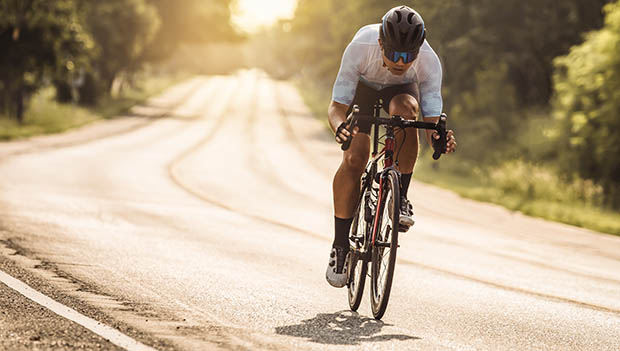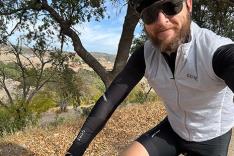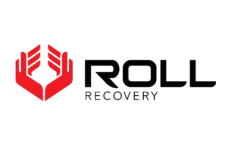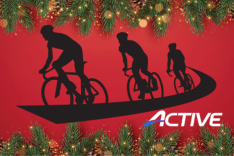
One of our favorite quotes is by legendary cyclist, Eddy Merckx: "Don't buy upgrades, ride upgrades."
While we're big advocates for first focusing on getting stronger on the bike before dropping serious coin on new gear, sometimes the most basic upgrade can make training and racing that much easier.
It's important to remember that road cycling has humble roots—it wasn't always carbon bikes and wireless shifting. Unless you're racing at the highest levels of the sport, whatever bike you're currently using is likely totally fine, and with a few small upgrades, it can make an average bike punch well above its weight class
The following suggestions will help boost efficiency, comfort, and of course, panache. Let's roll.
Tires
Tires are often overlooked by many cyclists. It's literally where the rubber meets the road, so it's important to make sure your tires are in good condition. Double-check there are no cracks in the sidewalls, there is plenty of tread left and there are no cuts or tears from rolling over debris. If any of these are an issue or if the tires are just really old and crunchy, investing in new ones ranks at the top of our list. It's a safety issue—you don't want a blowout when flying downhill or cornering—and new tires will roll more smoothly and grip better.
Bike Fit
This isn't an "upgrade" per se since we're not talking new gear, but a bike fit is one of the most cost-effective ways to boost efficiency and comfort on a bike. There are a few different options when making an appointment, from their starter option that adjusts basics like saddle height and cleat position, all the way to more expensive options that swap out handlebars and stems for different widths and lengths. Be sure to bring a kit, cycling shoes, etc., and don't be afraid to speak up if something doesn't feel right even if you've been set in the "optimal" position.
Bottle Cages
This is one of the easiest and cheapest upgrades on this list. If you're still using old metal water bottle cages mounted to your frame, it's time to replace them with new, plastic cages that are both lighter and more flexible, making it easier to take your bottle out (and put it back in) while riding. Plastic bottle cages come in a wide range of colors to match your bike, bottles, or favorite kit. Try a couple out in the store as some are top-loading and others are side-loading. Avoid the carbon fiber bottle cages—they're nice but not worth the extra money for the small amount of weight savings you'll get.
Pedals
Say goodbye to flat pedals or cage pedals! Opting for clipless pedals will not only save weight overall, but they help you to pedal more efficiently—you can pull up and push down through the pedal stroke. We admit they do take a bit of practice, but once you get the hang of it (practice in a field or holding onto something), they boost bike handling as well to give you more confidence overall.
Saddle
If you're spending hours at a time on a bike, a comfortable saddle is key. Look for one that strikes a nice balance between performance and comfort, meaning you don't want something too squishy and heavy, but you also don't want one with no padding at all. Everyone has different preferences and different sit bone widths, so check with your local bike shop and see what they recommend.
Brakes
You might be surprised to know that like tires, brakes also have a shelf life. An especially important upgrade for older bikes, rim brakes can start to dry out and crack, making them less efficient at stopping forward momentum (meaning even though you're squeezing the brakes harder than usual, you're not slowing down as quickly). You likely don't have to replace the whole caliper, just the brake pads themselves.
Cleaning Products/Lubrication
Just like how you have to replace the oil in your car and drive it through the car wash every so often, a bike needs regular maintenance to stay in proper working order and prevent any unnecessary wear and tear. It's easy—even an old bike can feel like new simply from wiping down the frame and cleaning the chain, cassette, and deraileurs. A word of caution though, don't use the random cleaner and lube you find at your local hardware store—brands like Muc-Off and Park Tool sell bike-specific products that are safe to use.
Bar Tape
Similar to the bottle cage recommendation, replacing bar tape is cheap and can really refresh the overall look and feel of your bike. Bar tape comes in a wide range of options, from cork to more synthetic materials of different thicknesses, so be sure to feel them in person before purchasing. They also come in several colors and patterns, perfect for coordinating with bottle cages or your helmet.
Tune up
If any of these upgrades sound daunting to you, a tune-up is the best place to start. Your local bike shop has a ton of knowledge and expertise to get your bike riding and shifting properly for not only a more comfortable ride but a safer ride, too. They'll be able to tell you if anything is broken and needs replacing, and they're a great resource to lean on for any gear selections (and great local routes, too).
READ THIS NEXT: 6 Places to Find Great Deals on Used Bicycles








Discuss This Article